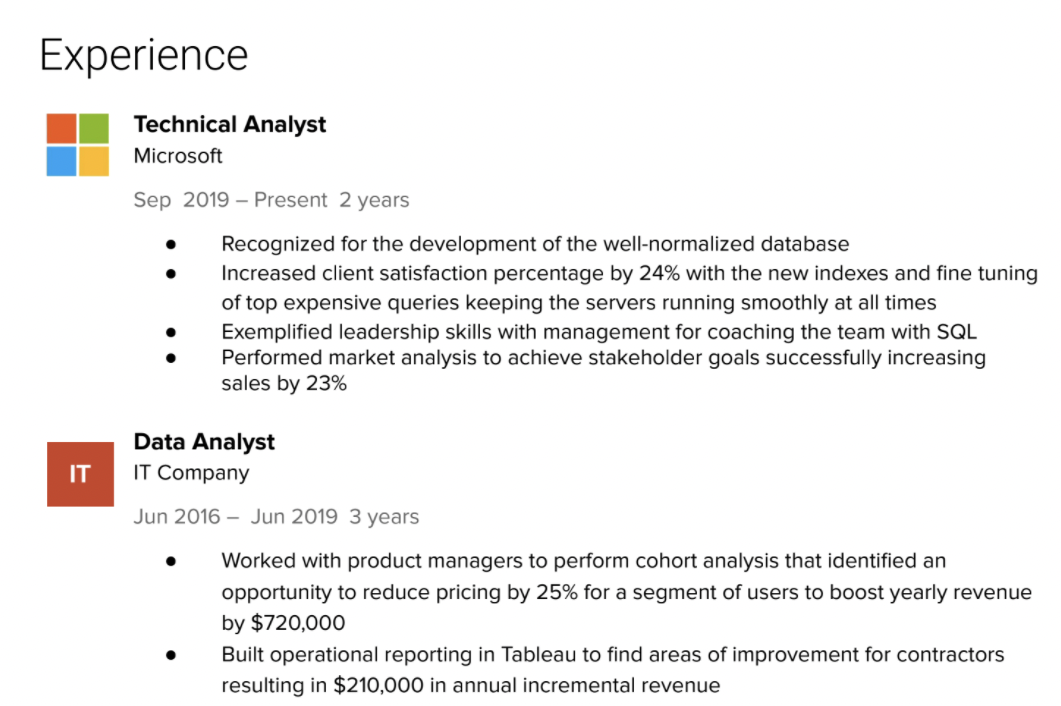
“Instead of using LinkedIn as a passive billboard, you can use the platform to build connections with other professionals in your niche.”
A LinkedIn profile is an important professional material. All students should have a LinkedIn profile to be competitive in the job market. This profile can be used as a more complete record of skills and achievements than the resume; to network with other students; and for students to be visible to recruiters.
The Basics
As with all professional documents, ensure that your LinkedIn profile has:
- Accurate spelling and punctuation
- Consistent tone throughout
- Working links
Compelling Introductory Information
- Professional profile photo
- Customized background image
- Catchy headline that incorporates your target role.
In this screenshot of Ryan Greene’s LinkedIn profile, we can see that his profile picture is zoomed in on his face, that his header image shows abstract art relevant to his field, and that his headline includes his industry and area of expertise.

Contact Information
Ensure that all of your contact information is accurate and up-to-date. In addition, ensure that you list your professional email.

Summary Statement
A compelling summary statement is written in clear language, speaks to your experience and background, and demonstrates your professional qualifications.
Ryan Greene’s Sample Summary Statement
Technical analyst with a background in computer information systems. Insatiable intellectual curiosity and ability to mine hidden gems located within large sets of structured, semi-structured, and raw data. Team-oriented individual with strengths in analytical problem solving and collaborating across diverse groups.
Competencies: data science, machine learning, cloud computing, Hadoop, Python/Java/R, network protocols
Experience
This section should be listed in reverse chronological order.
Each entry should include the following:
- Job title
- Company name and location
- Dates of employment
Your experience section should include your accomplishments, not just your job duties. Use results-driven bullets to highlight progress in your career.
Ryan Greene’s Sample Experience Section
Technical Analyst
Microsoft
September 2019-Present
- Recognized for the development of the well-normalized database
- Increased client satisfaction percentage by 24% with the new indexes and fine tuning of top expensive queries keeping the servers running smoothly at all times
- Exemplified leadership skills with management for coaching the team with SQL
- Performed market analysis to achieve stakeholder goals successfully increasing sales by 23%
Data Analyst
IT Company
June 2016-June 2019
- Worked with product managers to perform cohort analysis that identified an opportunity to reduce pricing by 25% for a segment of users to boost yearly revenue by $720,000
- Built operational reporting in Tableau to find areas of improvement for contractors resulting in $210,000 in annual incremental revenue

Education
Your Education section should be in reverse chronological order. A boot camp should be listed as a certificate.

Skills
Your skills section should include at least 20 skills and interests. The skills should be a mixture of technical and transferable, and the interests should be a mixture of personal and professional.
Ryan Greene’s Sample Skills
Industry Knowledge
- Data Analytics
- Python (Programming Language)
- SQL
- Algorithms
- Data Science
- Data Engineering
- ETL
- Data Management
Interpersonal Skills
- Analytics Skills
- Problem Solving
Tools and Technologies
- JavaScript
- NoSQL
- GitHub
- SciKit
- Flask
- Tableau
- Pandas
- Juptyer Notebook
- R
- HTML
Projects and Recommendations
Include at least 2-3 projects highlighted with working links. Also include at least 2-4 recommendations that attest to your skills and work ethic.
Ryan Greene’s Sample Projects and Recommendations
Ryan has highlighted three active projects, and has included recommendations from a former supervisor and a former instructor.
Former Manager
I have known Ryan for two years. I met him in the summer of 2017 when he was enrolled in my Introduction to MATLAB class. I taught the same course again during the fall of 2017, during which time Ryan was a teaching assistant. Ryan, of course, performed very well.
Former Instructor
I had the pleasure of working with Ryan as part of a comprehensive in-person boot camp in Data Analytics and Visualization. I experience first-hand Ryan’s dedication and sharp focus to differentiate himself and stand out.




